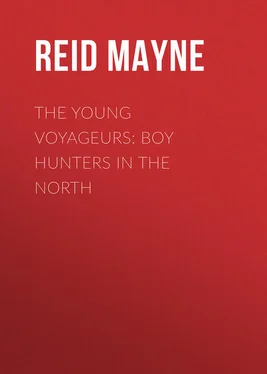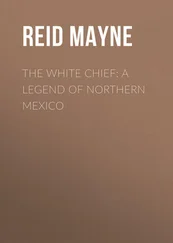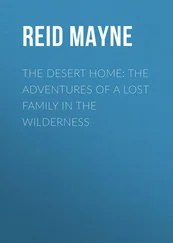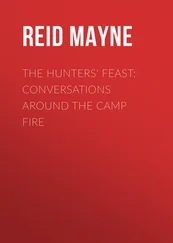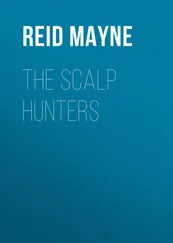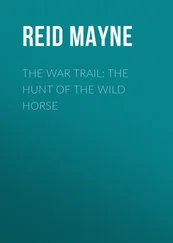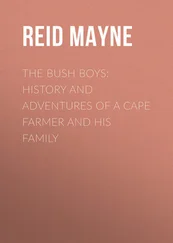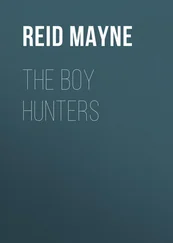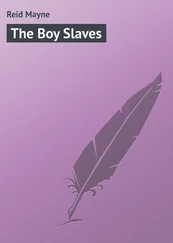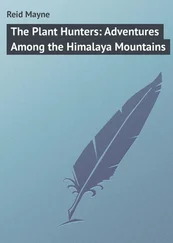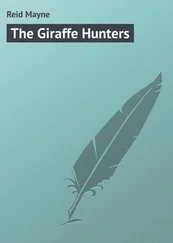Mayne Reid - The Young Voyageurs - Boy Hunters in the North
Здесь есть возможность читать онлайн «Mayne Reid - The Young Voyageurs - Boy Hunters in the North» — ознакомительный отрывок электронной книги совершенно бесплатно, а после прочтения отрывка купить полную версию. В некоторых случаях можно слушать аудио, скачать через торрент в формате fb2 и присутствует краткое содержание. Жанр: literature_19, foreign_antique, foreign_prose, foreign_children, на английском языке. Описание произведения, (предисловие) а так же отзывы посетителей доступны на портале библиотеки ЛибКат.
- Название:The Young Voyageurs: Boy Hunters in the North
- Автор:
- Жанр:
- Год:неизвестен
- ISBN:нет данных
- Рейтинг книги:5 / 5. Голосов: 1
-
Избранное:Добавить в избранное
- Отзывы:
-
Ваша оценка:
- 100
- 1
- 2
- 3
- 4
- 5
The Young Voyageurs: Boy Hunters in the North: краткое содержание, описание и аннотация
Предлагаем к чтению аннотацию, описание, краткое содержание или предисловие (зависит от того, что написал сам автор книги «The Young Voyageurs: Boy Hunters in the North»). Если вы не нашли необходимую информацию о книге — напишите в комментариях, мы постараемся отыскать её.
The Young Voyageurs: Boy Hunters in the North — читать онлайн ознакомительный отрывок
Ниже представлен текст книги, разбитый по страницам. Система сохранения места последней прочитанной страницы, позволяет с удобством читать онлайн бесплатно книгу «The Young Voyageurs: Boy Hunters in the North», без необходимости каждый раз заново искать на чём Вы остановились. Поставьте закладку, и сможете в любой момент перейти на страницу, на которой закончили чтение.
Интервал:
Закладка:
“So much for the ‘hooper,’” continued Lucien; “now for the ‘trumpeter.’ This is the largest of the American swans, being found to measure seventy inches in length. Its specific name ‘trumpeter’ (Cygnus buccinator ) is given to it on account of its note, which resembles the sound of a French horn, or trumpet, played at a distance. The bird is white, with black bill and feet, and has also a reddish orange or copper tinge upon the crown and neck; but it wants the yellow spot between the split of the mandibles and the eye. It is easily distinguished from the hooper, both by its louder note and larger body. Its habits, however, are very similar, except that it seems to be more gregarious, – small flocks of six or eight often appearing together, while the hooper is seen only in pairs, and sometimes solitary. Another distinction is, that the trumpeter arrives much earlier in its migrations to the North, being the earliest bird that appears except the eagles. It breeds as far South as latitude 61 degrees, but most generally within the Arctic circle. Its nest is constructed similarly to those of the hooper, but its eggs are much larger, one of them being a meal for a moderate eater, without bread or any other addition. The trumpeter frequently arrives in the North before the lakes or rivers are thawed. It is then obliged to find sustenance at the rapids and waterfalls, where the Indians can approach under cover, and many are shot at such times by these people. At all other times, as you, François, have observed, it is a bird most difficult of approach; and the Indian hunters only attempt it when they have a long-range gun loaded with ball.
“The third species of American swans is that known as Bewick’s swan (Cygnus Bewickii ), called after the naturalist of that name. It is the smallest of the three, rarely measuring over fifty-two inches in length, and weighing only fourteen pounds, while the hooper is over twenty pounds in weight, and the trumpeter is often obtained of the enormous weight of thirty!
“Bewick’s swan is also said to be identical with one of Brehm’s singing swans. Its colour is almost similar to that of the hooper, and the two are often mistaken for each other. The size and the tail-feathers of all three of the American swans form a sufficiently specific distinction. In the trumpeter these are twenty-four in number, in the hooper twenty, while the small species has only eighteen.
“Of the three, the last-mentioned is the latest on its annual journey, but it breeds farther North than either of the others. Its nest is found upon the islands of the Arctic Sea; it is usually built of peat-moss, and is of gigantic dimensions, being six feet long by five in width, and nearly two feet high. In the top of this pile is the nest itself, forming a large round cavity nearly two feet in diameter. The eggs are of a brownish white, with clouds of darker tint.
“I have remarked,” continued Lucien, “a singularity in the geographical distribution of these three species. Upon the Pacific coast the smallest kind and the hooper only are met with, and the small ones outnumber the others in the ratio of five to one. In the interior parts of the continent only the hoopers and trumpeters appear; and the trumpeters are by far the most numerous, while upon the eastern coasts of America the hoopers are the sort best known.
“The swans are eagerly hunted both by the Indians and white hunters. Their skins, with the quills and down, form a source of profit to the natives of the fur countries, who dispose of them to the Hudson’s Bay Company. In some years as many as ten thousand skins have been exported, and sold at the rate of six or seven shillings each. Most of the skins thus sold were those of the trumpeter swans, which are the most numerous.
“Now,” said Lucien, in conclusion, “you know as much about the swans as I do; so I shall drop the subject, and recommend to all of you a piece of roast swan, which is now just done to a turn, and which I doubt not will be found less dry than my lecture.”
Chapter Five.
A Swan-Hunt by Torchlight
A few days brought our travellers to the settlement of Red River, where they made but a very short stay; and, having procured a few articles which they stood in need of, they resumed their journey, and floated on towards Lake Winnipeg. The swans were seen in greater numbers than ever. They were not less shy however, and François, as before, in vain tried to get a shot at one. He was very desirous of bringing down one of these noble birds, partly because the taste he had had of their flesh had given him a liking for it; and partly because their shyness had greatly tantalised him. One is always more eager to kill shy game, both on account of the rarity of the thing, and the credit one gets for his expertness. But the voyageurs had now got within less than twenty miles of Lake Winnipeg, and François had not as yet shot a single swan. It was not at all likely the eagles would help him to another. So there would be no more roast swan for supper.
Norman, seeing how eager François was to shoot one of these birds, resolved to aid him by his advice.
“Cousin Frank,” said he, one evening as they floated along, “you wish very much to get a shot at the swans?”
“I do,” replied François, – “I do; and if you can tell me how to accomplish that business, I’ll make you a present of this knife.” Here François held up a very handsome clasp-knife that he carried in his pouch.
A knife in the fur countries is no insignificant affair. With a knife you may sometimes buy a horse, or a tent, or a whole carcass of beef, or, what is stranger still, a wife! To the hunter in these wild regions – perhaps a thousand miles from where knives are sold – such a thing is of very great value indeed; but the knife which François offered to his cousin was a particularly fine one, and the latter had once expressed a wish to become the owner of it. He was not slow, therefore, in accepting the conditions.
“Well,” rejoined he, “you must consent to travel a few miles by night, and I think I can promise you a shot at the trumpeters – perhaps several.”
“What say you, brothers?” asked François, appealing to Basil and Lucien; “shall we have the sport? Say yes.”
“Oh! I have no objection,” said Lucien.
“Nor I,” added Basil. “On the contrary, I should like it above all things. I wish very much to know what plan our cousin shall adopt. I never heard of any mode of approaching these birds.”
“Very well, then,” answered Norman, “I shall have the pleasure of instructing you in a way that is in use in these parts among the Indians, who hunt the swan for its skin and quills, which they trade to us at the post. We can manage it to-night, I think,” continued he, looking up at the sky: “there is no moon, and the sky is thick. Yes, it will be dark enough.”
“Is it necessary the night should be a dark one?” asked François.
“The darker the better,” replied Norman. “To-night, if I am not mistaken, will be as black as pitch. But we need to make some preparations. It is near sundown, and we shall have just time to get ready for the business. Let us get ashore, then, as quickly as possible.”
“Oh! certainly – let us land,” replied all three at once.
The canoe was now turned to the shore; and when it had arrived within a few feet of the land it was brought to a stop. Its keel was not allowed to touch the bottom of the river, as that would have injured the little craft. The greatest precaution is always observed both in landing and embarking these vessels. The voyageurs first get out and wade to the shore, one or two remaining to hold the canoe in its place. The cargo, whatever it be, is then taken out and landed; and after that the canoe itself is lifted out of the water, and carried ashore, where it is set, bottom upward, to dry. The birch-bark canoe is so frail a structure, that, were it brought rudely in contact either with the bottom or the bank, it would be very much damaged, or might go to pieces altogether. Hence the care with which it is handled. It is dangerous, also, to stand upright in it, as it is so “crank” that it would easily turn over, and spill both canoemen and cargo into the water. The voyageurs, therefore, when once they have got in, remain seated during the whole passage, shifting about as little as they can help. When landed for the night, the canoe is always taken out of the water as described. The bark is of a somewhat spongy nature; and if left in the water for a length of time, would become soaked and heavy, and would not run so well. When kept all night, bottom upward, it drips and becomes dryer and lighter. In the morning, at the commencement of the day’s journey, it sits higher upon the water than in the afternoon and evening, and is at that time more easily paddled along.
Читать дальшеИнтервал:
Закладка:
Похожие книги на «The Young Voyageurs: Boy Hunters in the North»
Представляем Вашему вниманию похожие книги на «The Young Voyageurs: Boy Hunters in the North» списком для выбора. Мы отобрали схожую по названию и смыслу литературу в надежде предоставить читателям больше вариантов отыскать новые, интересные, ещё непрочитанные произведения.
Обсуждение, отзывы о книге «The Young Voyageurs: Boy Hunters in the North» и просто собственные мнения читателей. Оставьте ваши комментарии, напишите, что Вы думаете о произведении, его смысле или главных героях. Укажите что конкретно понравилось, а что нет, и почему Вы так считаете.
